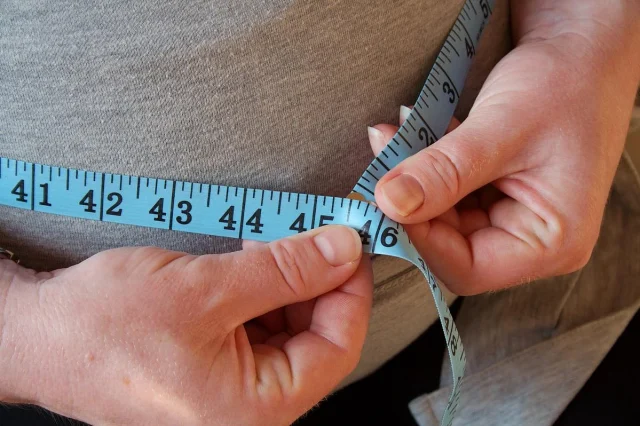Researchers say clinical guidelines for assessing adiposity would benefit from incorporation of BMI-specific WC thresholds
By Elana Gotkine HealthDay Reporter
THURSDAY, July 10, 2025 (HealthDay News) — Stratifying body mass index (BMI) categories by waist circumference (WC) thresholds improves mortality risk prediction in postmenopausal women, according to a study published online July 8 in the Annals of Internal Medicine.
Aaron K. Aragaki, from the Fred Hutchinson Cancer Center in Seattle, and colleagues conducted a prospective cohort study to examine whether stratifying BMI categories by BMI-specific WC thresholds improves mortality risk prediction. A total of 139,213 postmenopausal women were included in a developmental cohort (67,774 women) and validation cohorts with a high prevalence of overweight and obesity (48,335 women; Validation Cohort 1) and in diverse, geographically separate centers (23,104 women; Validation Cohort 2).
Overall, 69,297 participants died during a median follow-up of 24 years. The researchers found that BMI categories with large WC had consistently greater multivariable-adjusted mortality risk compared with those with normal WC. Women with normal or overweight BMI and large WC had an increased risk compared with women with normal weight and normal WC (hazard ratios, 1.17 and 1.19, respectively) and had a similar risk to those with obesity-1 (BMI 30 to <35 kg/m2) but normal WC (hazard ratio, 1.12). Mortality was similar in association with obesity-1 and large WC and obesity-3 (BMI ≥40 kg/m2) and normal WC (hazard ratios, 1.45 and 1.40, respectively). Discrimination and risk stratification at 10 years was improved in models with BMI-specific WC thresholds for Validation Cohort 1, with C-statistics improving 0.7 percent to 61.3 percent and continuous net reclassification improvement of 20.4 percent. Mixed results were seen for Validation Cohort 2, with improvement in risk stratification but not discrimination. At 20 years, results were similar.
“Clinical guidelines for assessing adiposity would benefit from incorporation of BMI-specific WC thresholds for improved risk stratification, particularly among healthy postmenopausal women with obesity,” the authors write.
Two authors disclosed ties to the pharmaceutical industry.
Editorial (subscription or payment may be required)
Copyright © 2025 HealthDay. All rights reserved.



















